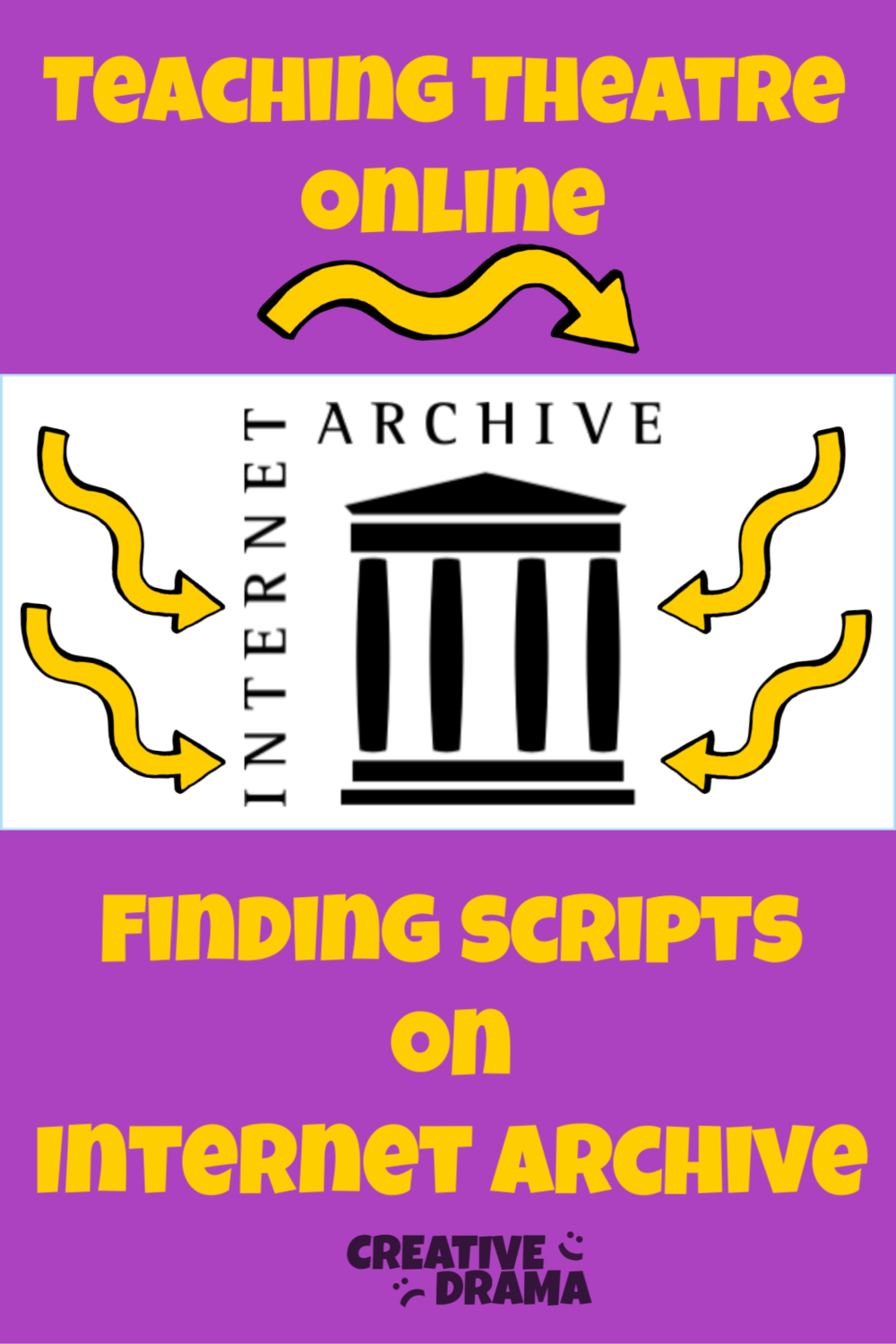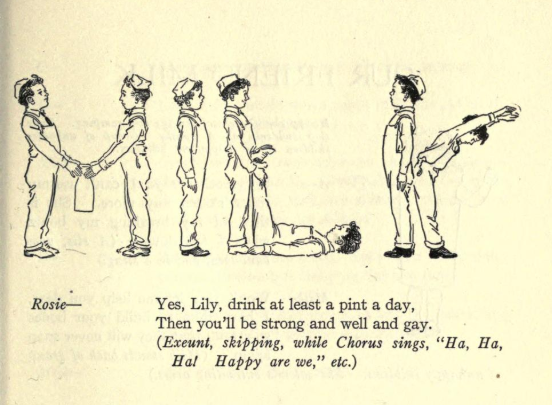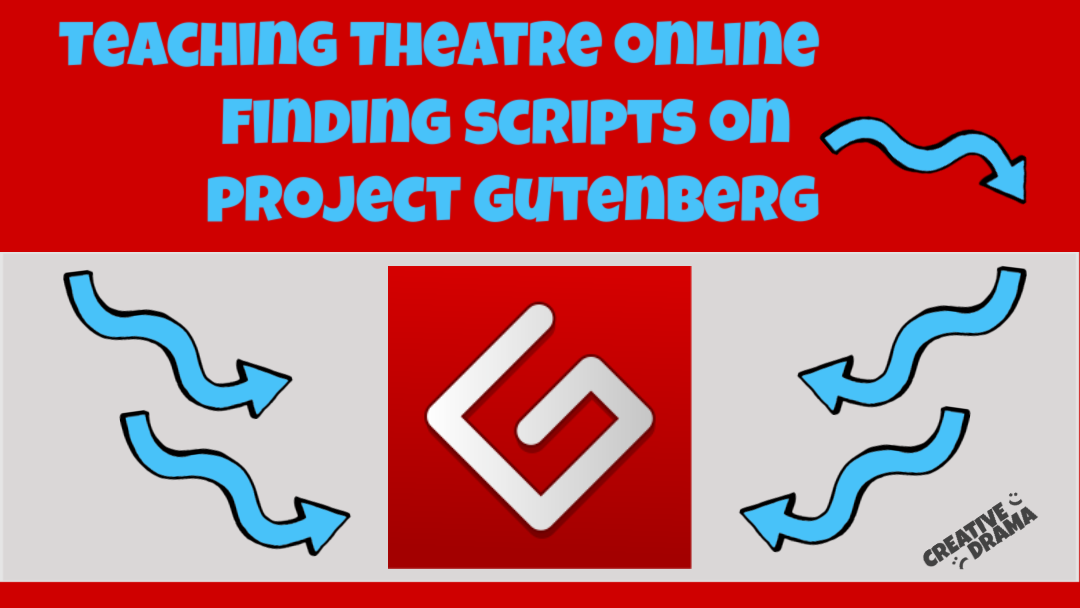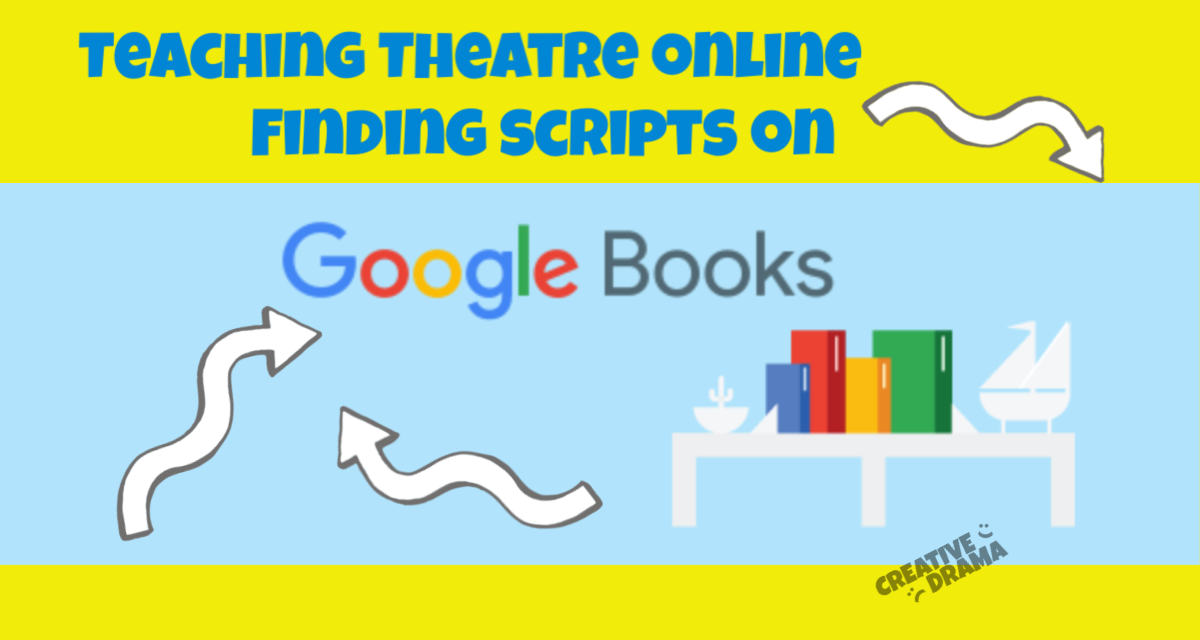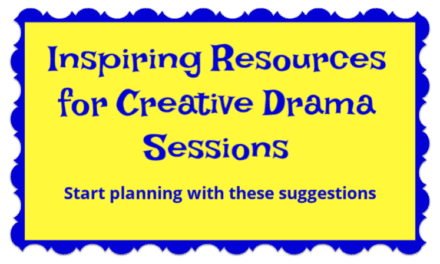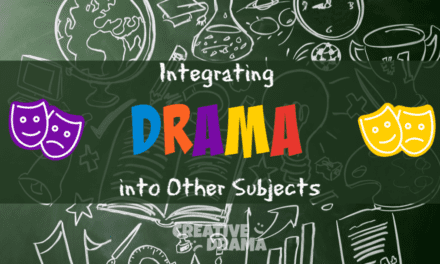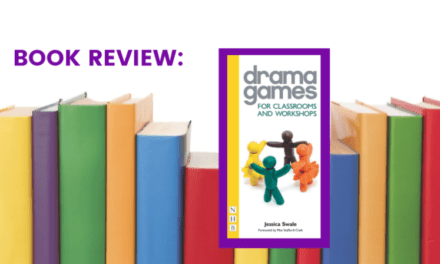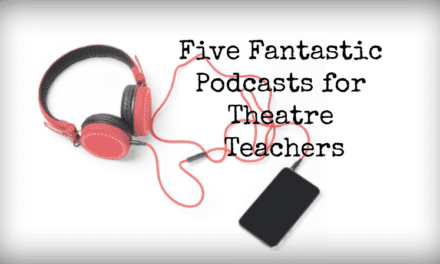Teaching Theatre Online – Finding Scripts on Internet Archive
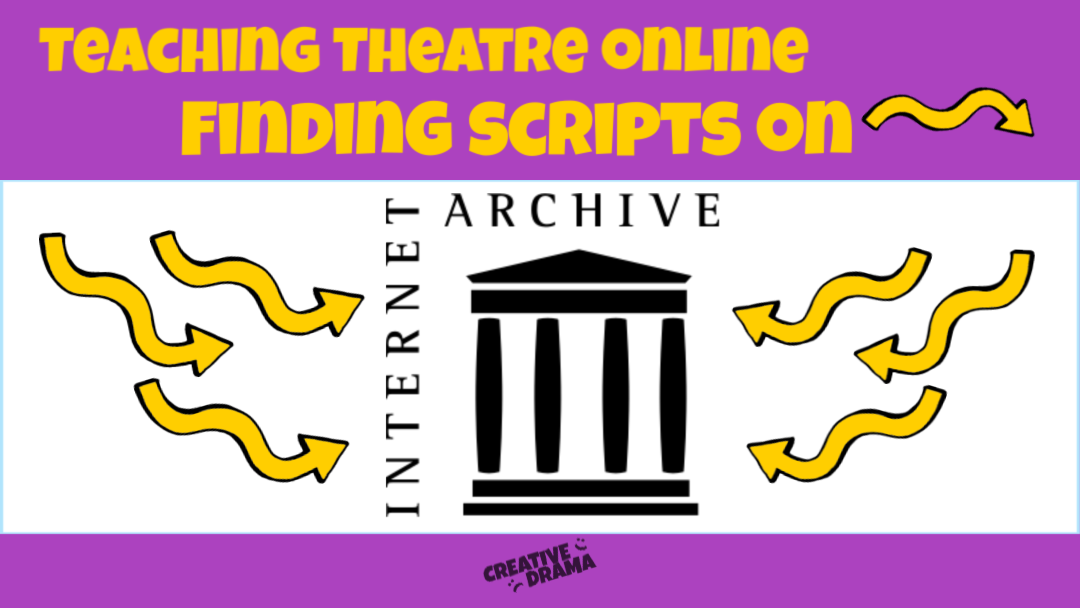
Are you looking for accessible plays for your students to read as part of your online theatre classes? The Internet Archive is a great resource for finding public domain scripts and other plays to read.
Founded in 1996, the Internet Archive is a non-profit digital library that saves websites, audio and video recordings, images, and software programs in addition to books. It’s operated through a foundation that aims to provide universal access to its materials.
The Internet Archive has books accessible through their library; any works in the public domain are available to download in one of several file formats.
For more recent works, you’ll need an account to borrow the texts, but it’s free. You can read the books online or download the file in one of several formats.
Most of the books are scans of pages; some are a little fuzzy in their typefaces, and there are sometimes handwritten annotations in the texts. You can often find a “clean” copy on the site.
Searching on the Internet Archive
Many of the public domain titles available on Project Gutenberg also appear here; there are also multiple copies of the same text.
But the search functions on the Internet Archive are a little more wide-ranging. Here’s what the Advanced Search page looks like:
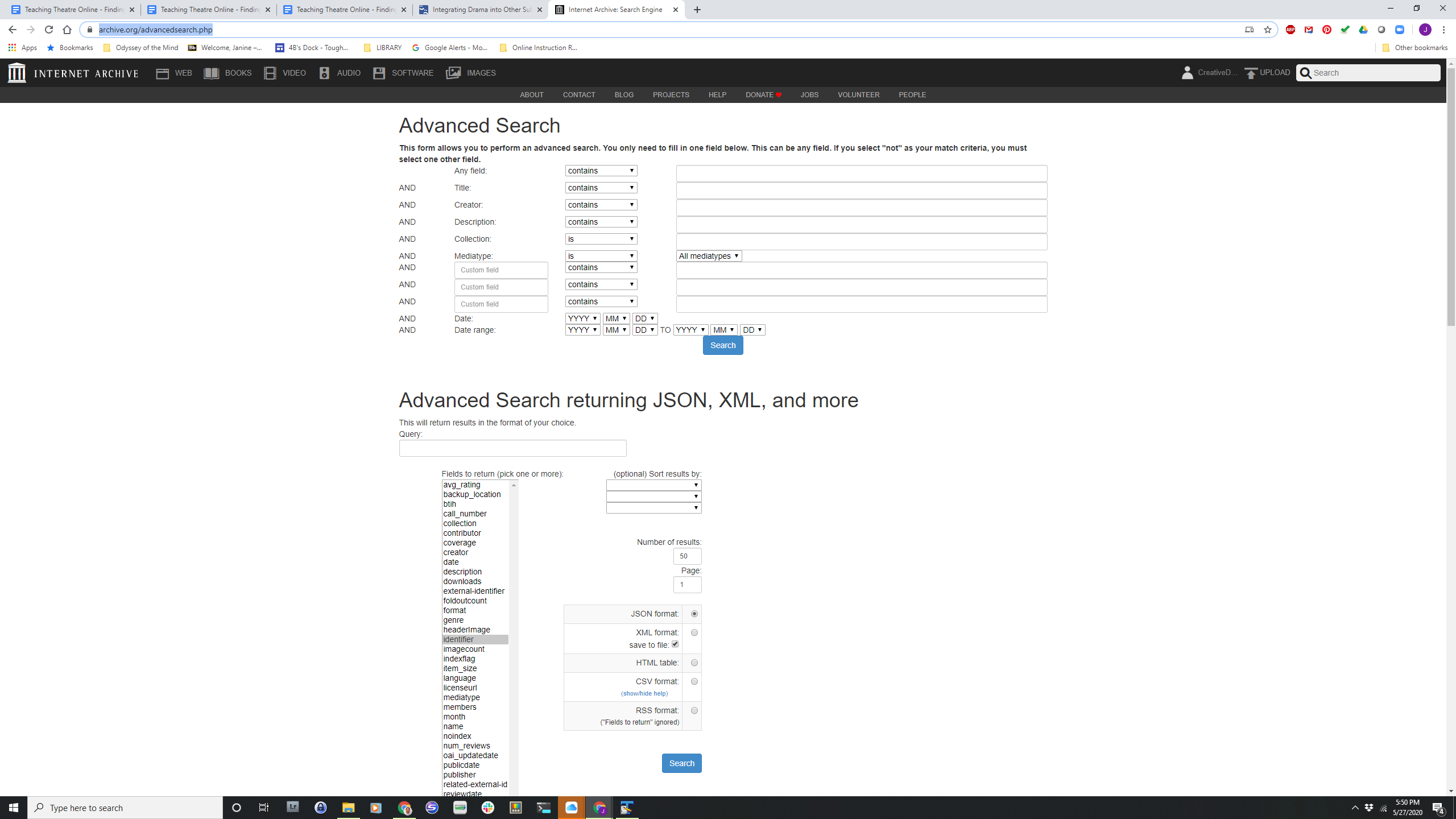
Advanced Search Page on Internet Archive
You can search by title or author (creator, here); you can also enter a date range – which is helpful when you’re looking for public domain titles.
Once you have a set of returns, you can limit the search further by topic, availability, or language:
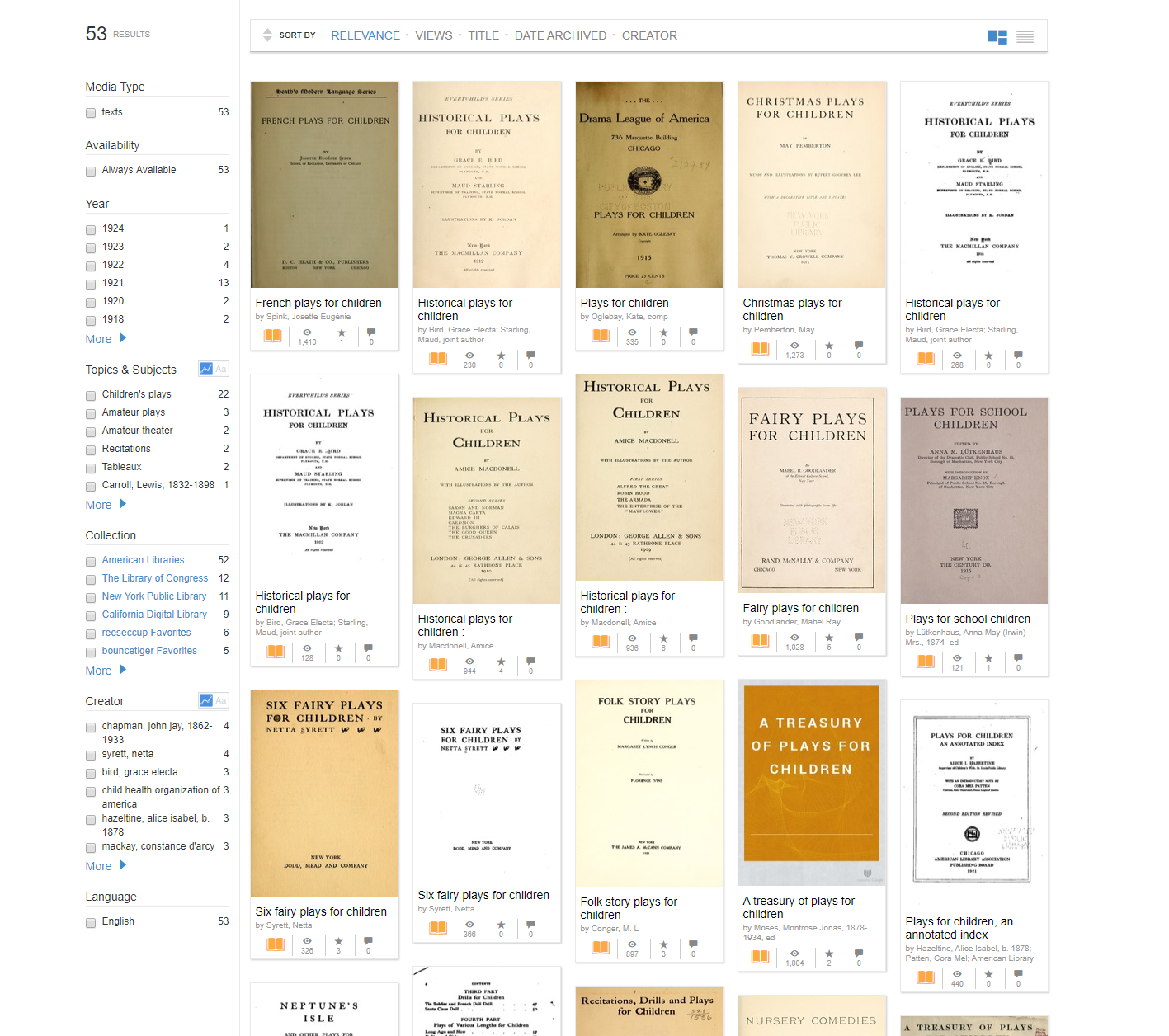
Narrowing Advanced Search Query on Internet Archive
The Internet Archive even has handy guides to their query syntax, Boolean Operators, and some other ways of finding what you’re looking for at the bottom of the Advanced Search page.
In addition to public domain works (mostly ones published in 1924 or earlier), the Internet Archive also has copies of some fairly recent (though often out-of-print) works available. This means that copyrights may still be in effect for many of the plays contained within the books on the site. Check the publication date on the text itself – I have found some errors in the “Publication Date” field on the information card. Unless you know the work is in the public domain, always check to see if someone holds the performance rights for a play before staging it (online or off).
The Reading Experience
As you find books you’re interested in reading, you can “star” them; when you look at your “Favorites,” you’ll see them collected together:
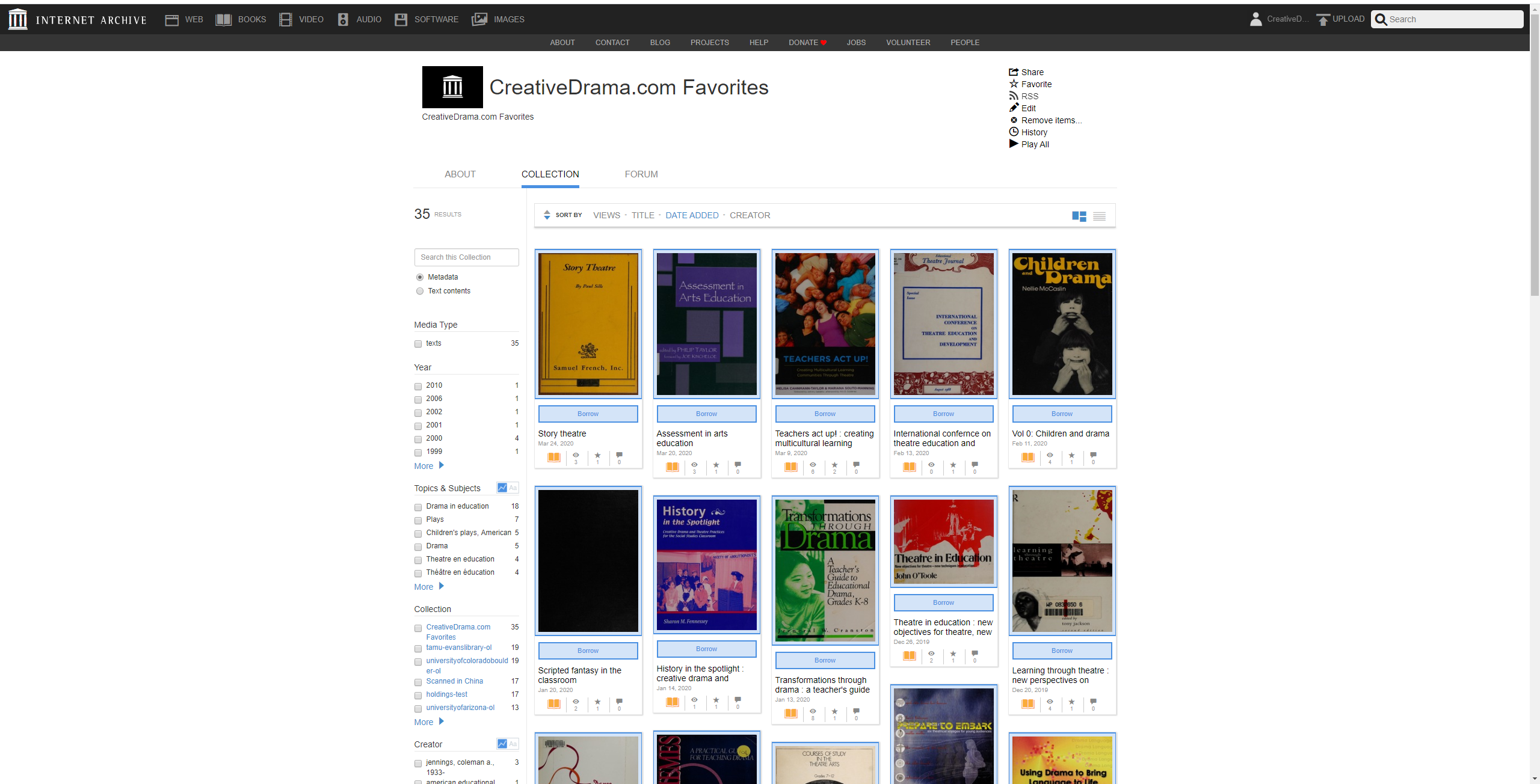
Internet Archive Favorites Page Screenshot
Internet Archive’s user interface is also more “bookish” than Project Gutenberg or Google Books. It looks like you’re reading the photographed pages of a book, and you can “flip” the pages by clicking on the edge of the right-hand page:
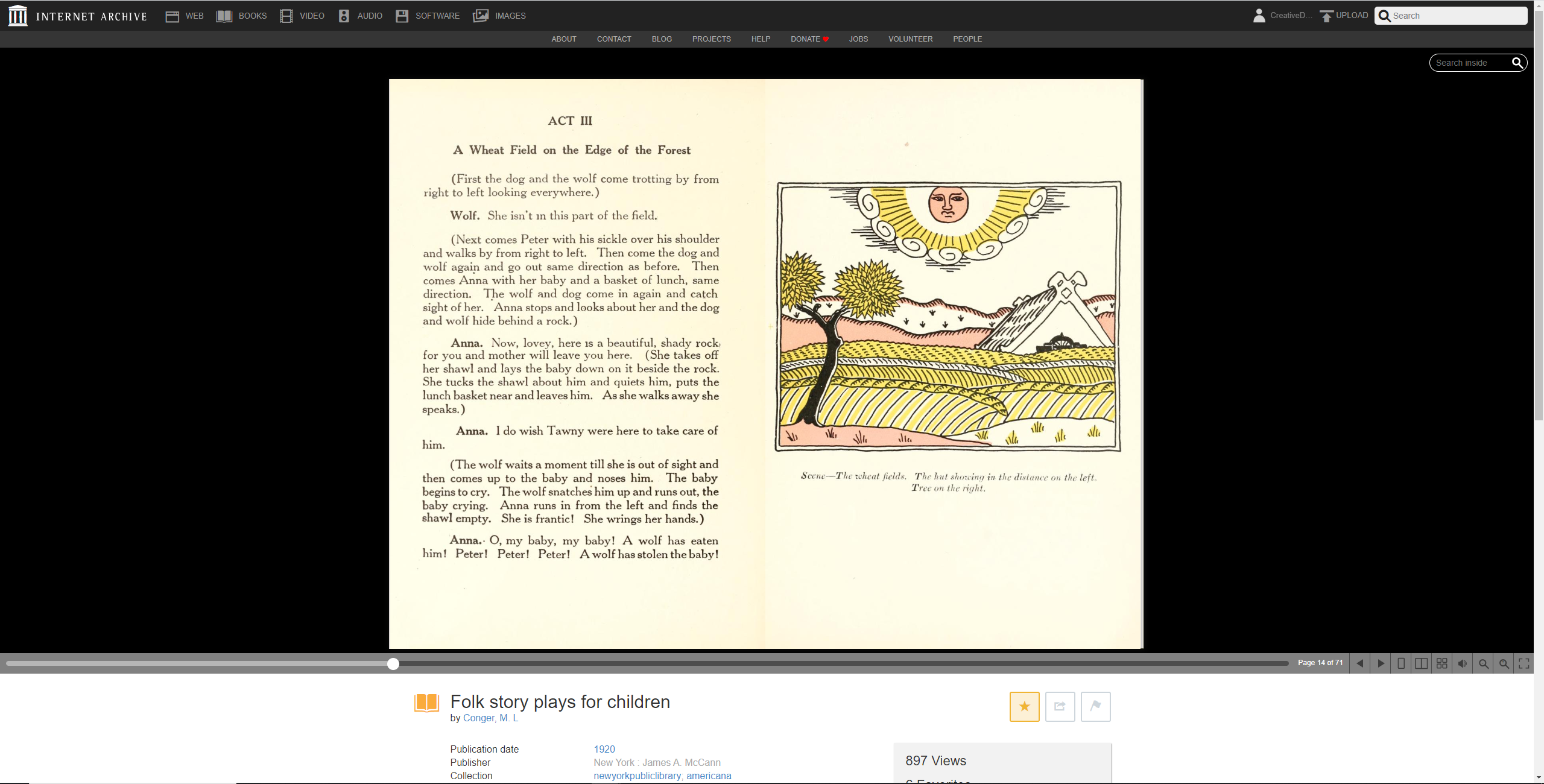
Example of Internet Archive’s reading interface – the book Folk Story Plays for Children
One of the best features of Internet Archive’s interface is the “Similar Items (based on metadata)” that appears at the bottom of a reading page. It’s a useful way to find related texts; here’s the list that pops up on the page for Plays As Experience:

Internet Archive Similar Items based on Metadata
There’s one English pedagogy book, four collections of one-act plays, one book of school plays, and two other play anthologies. Secondary School Science Teaching is an outlier; sometimes the cover appearance is part of the metadata.
Below, I’ve selected a few titles available on Internet Archive that may interest you.
Children’s Plays on Internet Archive
There are several volumes of Augusta Stevenson’s Children’s Classics in Dramatic Form:
- Book Three – Pieces based on stories from Aesop, Grimm, and Anderson
- Book Four – Stevenson branches out into historical drama with William Tell, Peter the Great’s School, Lafayette’s Toast, and Bernard Palissy, Enameller to His Majesty
- Book Five – Includes Nathan Hale and The Treason of Benedict Arnold
Also by Augusta Stevenson:
Dramatized Scenes from American History (1916)– From Jamestown to the War for American Independence, Stevenson presents seven pieces; she consulted with a Yale history professor for accuracy.
Health Plays for School Children as Developed by Teachers and Pupils in the Public Schools of New York (1921) *
In 1920, the Child Health Organization of America held a play contest for pieces “making the most graphic representation of the value of milk.” In an early version of Drama Integration, teachers and students “on five days’ notice” created the 15 pieces – two were titled The King of Foods after the nutritional pamphlet the classes used for their content – and there’s a wide variety of dramatic genres.
Some particularly delightful ones:
- The King of Foods – The first in the collection, it’s a presentational pageant piece which reminded me of Prairie Dawn’s plays on Sesame Street
- The Wizardry of Milk – Involves acrobatics, singing, and a parade of occupations
- The Carpenters’ Union – A verse play in rhyming couplets ending with the Carpenters (Protein, Lime (Calcium) Fat, Sugar, Iron, Vitamins) forming the word “MILK” with their bodies:

Actors Spelling MILK from Health Plays for School Children
- A Day in Happyland – The Spirit of Progress travels back to the days of the Puritans and the early 19th century to reveal the power of… drinking milk, of course!
* Please note that the nutritional information presented in these pieces is now nearly 100 years old and may no longer be advisable! ![]()
The Silver Thread and Other Folk Plays for Young People; Arranged for Use in the Grammar Schools by Constance D’Arcy MacKay (1910)
MacKay’s collection includes Source and Production Notes for each of the pieces, inspired by folk tales from Wales, Italy, Ireland, and France, among other countries. A Brewing of Brains, from an English folk tale, is particularly charming.
For scripts to read, there appear to be three volumes (called series) of Junior One-Act Plays of Today (1930)*, edited by A.E.M. Bayliss. The First and Third Series are on Internet Archive. The First Series features titles such as The Dyspeptic Ogre and The Hordle Poacher. The Third Series has The Reluctant Dragon, adapted from a story by Kenneth Graeme, and Anne Hathaway Shakespeare appearing in The Second Best Bed.
*The copyright dates in Bayliss’ series mean they are not automatically in the public domain; the performance rights holders are indicated on the first page of each script (good luck!).
One-Act Plays on Internet Archive
Here are some of the public domain one-act play anthologies available on Internet Archive.
Plays of the 47 Workshop (1918) features pieces from a playwriting course at Harvard (English 47)
Smith College Theatre Workshop Plays; an anthology (1918-1921) has ten plays, written by women in a playwriting course at Smith.
Twenty Contemporary One-Act Plays (American), edited by Frank Shay (1922)
A “supplementary volume to Fifty Contemporary One-Act Plays,” Shay calls this volume “the best plays I could find.”
And here are some great collections for reading, most of which contain a few titles in the pubic domain:
Plays As Experience: One-Act Plays for the Secondary School edited by Irwin J. Zachar (1962)
Plays As Experience is an excellent introduction to drama. The text features representative examples of comedy, melodrama, farce, folk play, tragedy, fantasy, and television drama as well as seven additional works for further study.
Following each play, there are
- discussion questions
- a vocabulary section
- essay/project prompts
- production notes
For the 7 representative plays, he’s suggested one-act and full-length plays in the same genre for further reading.
Zachar also wrote short essays on “Staging the Play,” “Writing Your Own Play,” and “Those Who Wrote the Plays in This Book” in addition to the supplementary materials for the plays themselves.
Short Plays, edited by Edwin Van Berghen Knickerbocker (1931)
Here’s another textbook on studying and working with plays in the classroom. It includes Eugene O’Neill’s Where the Cross is Made and Anatole France’s The Man Who Married a Dumb Wife.
Twenty One-Act Plays: An Anthology for Amateur Performing Groups (1978)
This book has one-acts by Thornton Wilder, Agatha Christie, and Luigi Pirandello.
Modern One-Act Plays edited by Philip Wayne (1935)
You’ll find Synge’s Shadow of the Glen and Thornton Wilder’s Love and How to Cure It in this collection.
Twenty One-Act Plays (1938), edited by John Hampden
These pieces span three decades from Lady Gregory’s The Rising of the Moon (1907) to Nora Ratcliff’s We Got Rhythm (1937).
Ten Selected One-Act Plays (1944), edited by Max H. Fuller
Fuller’s collection has some interesting titles in addition to A.A. Milne’s The Ugly Duckling. Though I’m unfamiliar with the titles or the authors, The Queen and Mr. Shakespeare, The Sage of Chelsea, and Monks and a Mummer sound intriguing.
J.W. Marriott’s collection One-Act Plays of To-day has six volumes (called series). The publication dates range from 1924 to 1937; Internet Archive has the First, Second, and Sixth. The Sixth Series (1937) has plays set in a variety of British periods. Women at War has an all-female cast of characters meeting up during the Interregnum, and The Centurion’s Billet at Swacking Bulphen has the subtitle “An Evening in Roman Britain.” There are also discussion questions at the end of the book.
THIS POST IS PART OF THE TEACHING THEATRE ONLINE SERIES
